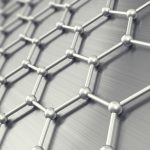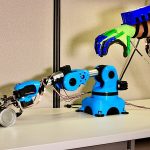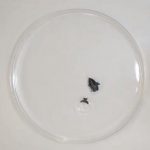How ants could inspire the next generation of antibiotics
As hospitals around the world struggle with dangerous drug-resistant infections, scientists are increasingly looking to nature for solutions.
Surprisingly, one promising source may be crawling...
Scientists unlock the secret to stronger, lightweight aluminum for cars
Lightweight, high-strength aluminum alloys are essential for making cars and planes more fuel-efficient.
But despite their promise, these materials are difficult to manufacture consistently, especially...
Scientists find a new way to rejuvenate the aging immune system
As we get older, our immune system slowly loses its edge.
One of the biggest changes happens in T cells, a type of white blood...
Why this vapor-deposited solar cell could transform renewable energy
Scientists in Singapore have made an important breakthrough that could help bring a new generation of ultra-efficient solar panels into everyday use.
Researchers at the...
AI tool detects silent liver disease early, saving lives
As more people are diagnosed with conditions like obesity, high blood pressure, type 2 diabetes, and sleep apnea, another serious health issue is also...
Scientists develop real-world magnetic cloak to protect sensitive electronics
Engineers at the University of Leicester have developed a new concept for a “magnetic cloaking device” that could shield sensitive electronics from disruptive magnetic...
Scientists create brain-like device that remembers for hours and then decomposes
Scientists in South Korea have created an artificial synapse that works with extremely low energy, remembers information for an unusually long time, and naturally...
This stretchable invisibility cloak hides objects even as they move
In the Harry Potter stories, an invisibility cloak can hide a person even while they walk, bend, or run.
In the real world, scientists have...
AI tool speeds up kidney cancer detection
A new AI-powered tool is helping doctors find kidney cancer faster and more accurately.
Researchers from the University of Tartu, working with the company Better...
How metal 3D printing solves aluminum’s biggest weakness
Aluminum is one of the most useful metals in modern life. It is light, strong, affordable, and easy to recycle.
That is why it is...
This shape-shifting wheel could help robots explore the moon’s hidden caves
Exploring the Moon’s surface is challenging enough, but reaching what lies beneath it is even harder.
Deep pits and long lava tubes on the Moon...
Why sodium-ion batteries could charge faster than lithium ones
As the world moves toward cleaner energy and electric technologies, better batteries are becoming more important than ever.
Batteries power everything from phones and laptops...
FEATURED
New compact camera captures 25 hidden colors beyond human vision
Digital cameras have long worked in the same way: they capture light in three color channels—red, green, and blue—just as the human eye does.
That’s...
A groundbreaking AI tool for predicting heart attacks
Recent research presented at the American Heart Association's Scientific Sessions in Philadelphia has revealed a revolutionary AI tool that could dramatically change how patients...
Flawed but better: How defects are making graphene more powerful
Graphene has long been called a “wonder material.” Just one atom thick, it is incredibly strong, light, and an excellent conductor of electricity.
But surprisingly,...
Researchers give robotic arms a steady hand for surgeries
Steady hands and uninterrupted, sharp vision are critical when performing surgery on delicate structures like the brain or hair-thin blood vessels.
While surgical cameras have...
These small swimming robots could heal themselves from damage
Small, swimming robots can magnetically heal themselves after breaking into two or three pieces.
Living tissue can heal itself from many injuries, but giving similar...





















